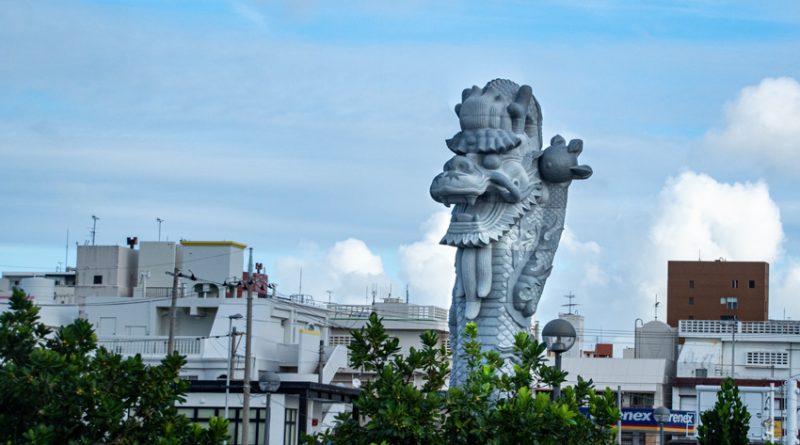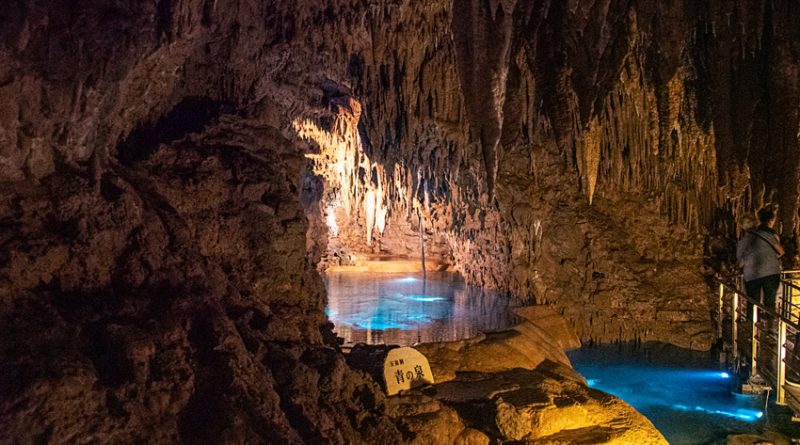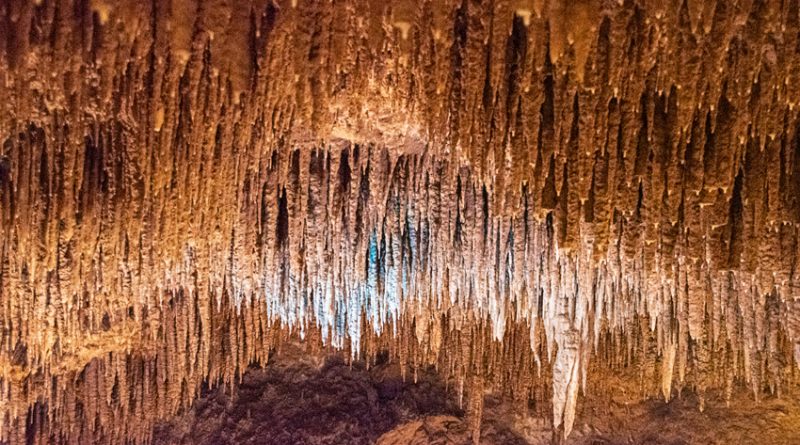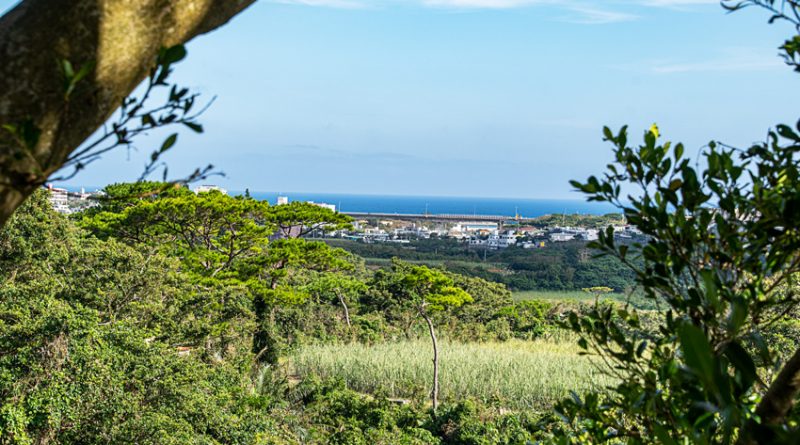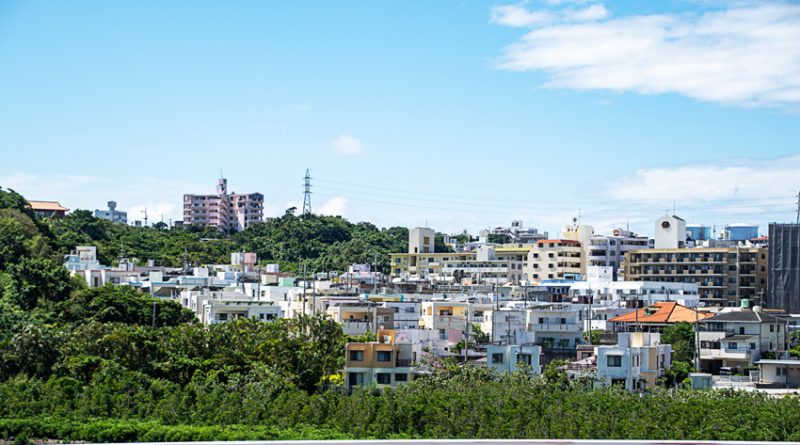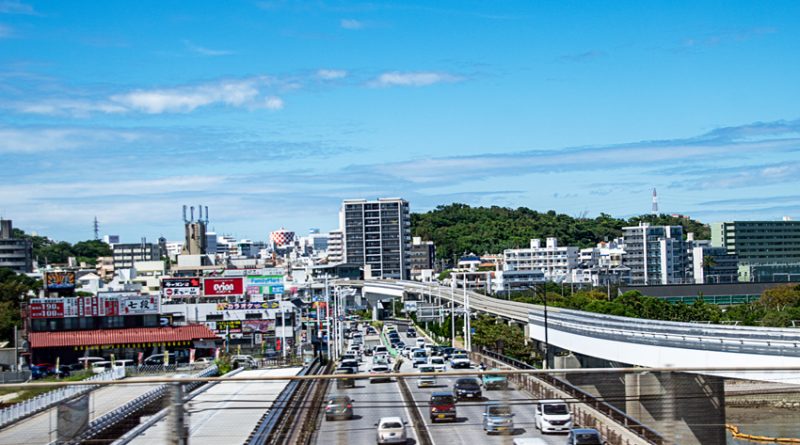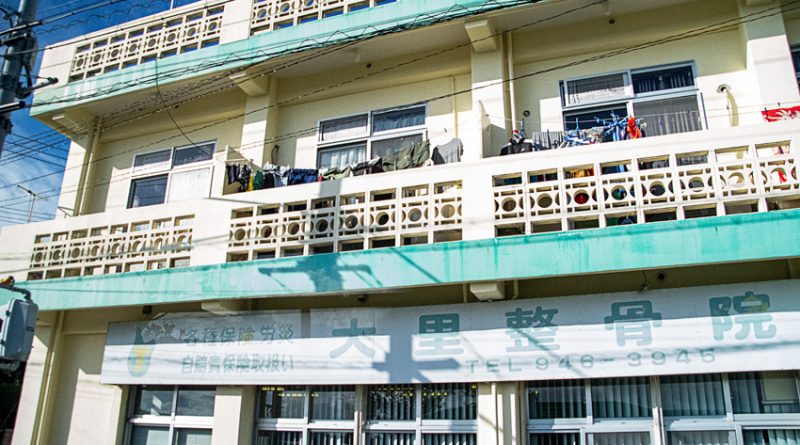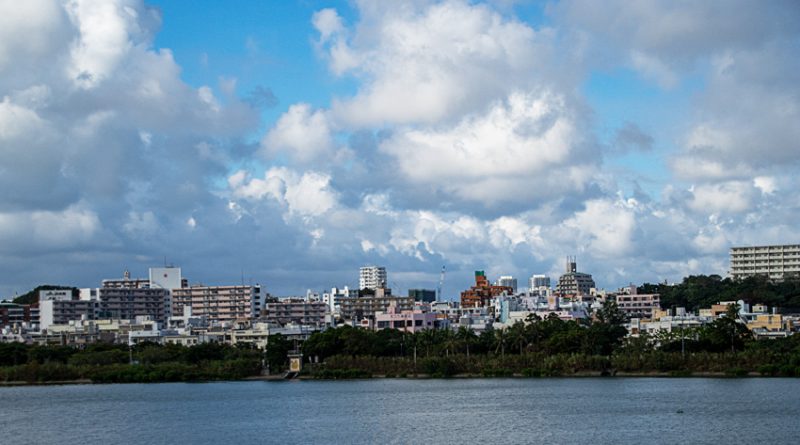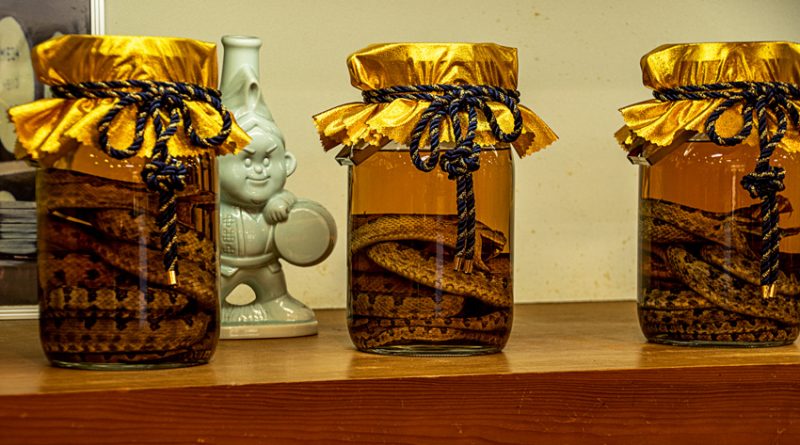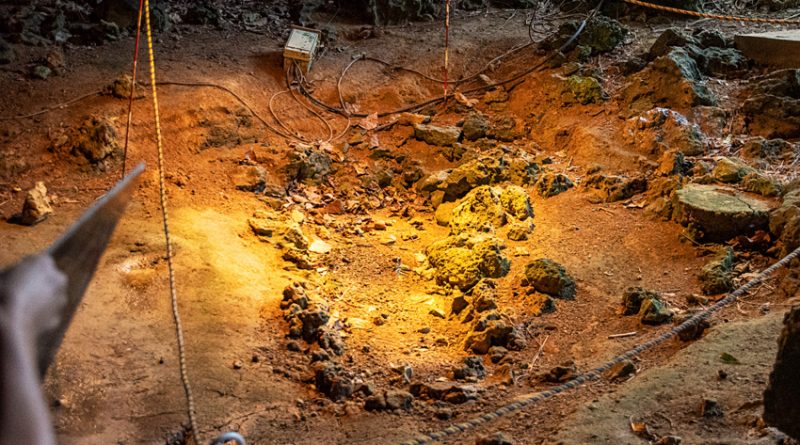No. 2. Okinawa: A Stunted Paradise
After visiting several vibrant, rapidly modernizing cities in China (but before stepping foot in the even more remarkable cities of Shanghai, Tianjin, Xian, and Beijing), Okinawa was something of a disappointment. It gives the appearance and has the feel of a backwater. The island, which is a prefecture of Japan, has been retarded in its development as a result of the ongoing U.S. military occupation of the island dating back more than seven decades.
A highlight of the island for us was the visit to the Gyokusendo Cave, the longest on the island with spectacular stalactites and stalagmites and, upon emerging into daylight a nature walk. These served as the basis for many of the photographs I captured during the trip. We visited the cave, which is part of Okinawa World, a park that promised interactive craft workshops. Of note at the cave is a pit from which old stone age remains were unearthed. There was little time to visit much beyond the cave itself, and most of the promised attractions were tourist traps of little interest.
Part of the reason I wanted to visit Okinawa had more to do with its strategic location and history, including the many protests over the decades since World War II concerning the continuing U.S. occupation and its negative effect on the island population.
Background
Because of its strategic location where the East China and South China Seas meet, Okinawa was the site of one of the hardest-fought and bloodiest battles of World War II. The island has been occupied by the U.S. military ever since.
More than fifty years ago, the New York Times quoted an Okinawa resident saying, “The base is not on the island; the island is on the base.” That reporter went on to describe his impression of the island back then:
Jet blasts, off-limits areas, guarded gates, barracks, dark green military vehicles, fatigue-wearing GIs [US soldiers], ammunition fields and fuel tanks—all these give a visitor to this island the impression that he is on a large United States military base with ‘foreigners’ scattered in various places around it.
—NY Times, 1969
There, within striking range of all countries of the Far East, the U. S. has built up its massive strategic military arsenal, the keystone for its imperialist military intervention in that part of the world. It played a key role as a base of operations during the Vietnam War.
Over the years many protests against the US occupation have taken place. In 2018, Okinawan residents protested plans for the new airfield. The activists, armed with placards and banners, organized a small armada of seventy boats and ships. They urged Japanese authorities to stop the expansion of the US military presence on the island. Some of the boats entered guarded construction site, where they were stopped by the Coast Guard. Some were arrested.
A couple of months later some 70,000 protesters gathered in Naha to protest the planned relocation of the U.S. Marine Corps Air Station from Futenma .
Last year a referendum was held regarding relocating a key US base. Voters were asked to weigh in on the construction of the new base in Henoko, a fishing village on the island’s north-east coast that is home to coral reefs and one of the few remaining habitats of the dugong, a relative of the Manatee.
The new facility is supposed to replace the marines’ Futenma airbase, located in the middle of a densely populated city. Futenma has attracted complaints about crimes committed by American service personnel, noise and the threat of aircraft accidents in an area close to homes and schools.
Opposition to the US military presence, which had surged in the 1960s and 70s, took on new life following a 1995 abduction and rape of a 12-year-old girl by three US soldiers.
Some Okinawans complain that the government in Tokyo had routinely ignored their objections to the presence of US military personnel and bases
Some commentators worry that hawks in Washington are fomenting plans to go to war to halt China’s growth as a world power. In recent years China has emerged as the world’s second-largest economy, while the US has stagnated. This stagnation is largely the result of a long-term decline in the rate of profit and also a by-product of the social and economic drain from 18 years of war in Iraq and Afghanistan. Both have taken a big toll on wide swaths of ordinary US working people who have borne the brunt of the capitalist economic crisis registered in declining life-expectancy, growing numbers of suicides among working-age people, and the opioid crisis.
Okinawa is less than half the size of Rhode Island. On it are stationed nearly 50,000 American troops in many scores of military installations. These include forces of the Army, Navy, Air Force, Marine Corps, Coast Guard, and-it is assumed-the CIA. The very existence of the U. S. military base on Okinawa, which in the past has included a stockpile of nuclear arms and other weaponry, is of life-and-death importance to the people of Okinawa and Japan. For example, in 1968 a B52 crashed upon takeoff, the huge explosion narrowly missed the nuclear stockpile.
The sea bottom of the Bay of Naha was contaminated by cobalt 60, from nuclear submarines. Numerous stories circulate in Okinawa about damage to wildlife and injury to humans as a result of nuclear and other “accidents” on the island. A 1969 incident in which 25 US servicemen were hospitalized due to accidental exposure to nerve gas revealed that the island was being used to store it. Following protests, it was removed from the island.

